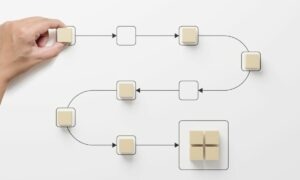Step-by-Step Guide: Implementing BPM in the Collections Department
As businesses evolve, so does the necessity to streamline operations for optimal efficiency. One of the areas that can significantly benefit from this efficiency is the collections department. This article will guide you through the steps of implementing Business Process Management (BPM) in your collections department.
Understanding BPM
Before diving into the implementation process, it’s essential to understand what BPM is. BPM stands for Business Process Management, a discipline that focuses on improving corporate performance by managing and optimizing a company’s business processes. It can therefore be described as a process optimization process. BPM is a robust approach designed to make workflows more efficient, more effective, and more capable of adapting to an ever-changing environment.
Why Implement BPM in the Collections Department?
Implementing BPM in your collections department can lead to significant improvements in efficiency and effectiveness. It can help you automate routine tasks, eliminate redundancies, reduce errors, and improve the overall customer experience. In turn, this can lead to faster collections, improved cash flow, and a healthier bottom line.
Steps to Implement BPM in the Collections Department
Implementing BPM in your collections department involves several steps, including:
1. Identify and Understand Your Processes
Understanding your current processes is the first step toward improving them. You need to identify what’s working, what’s not, and where there are opportunities for improvement.
2. Design and Model Your Processes
Once you’ve identified and understood your processes, the next step is to design and model them. This involves mapping out your processes in a way that’s easy to understand and follow. This is also the stage where you’ll identify any bottlenecks or inefficiencies that need to be addressed.
3. Implement Your Processes
After designing and modeling your processes, the next step is to implement them. This involves putting your new processes into action and training your staff on how to follow them.
4. Monitor and Improve Your Processes
The final step in the BPM implementation process is to monitor and improve your processes. This involves tracking your processes’ performance, identifying areas for improvement, and making necessary adjustments.
The Role of Automation in BPM
One of the key elements of BPM is automation. Automation can take many forms, from simple task automation to more complex process automation. When implemented correctly, automation can help reduce manual work, increase accuracy, and improve efficiency. This is where Flokzu comes in. Flokzu offers a robust platform for business process automation, including Financial Automation, which can be particularly useful in the collections department.
Conclusion
Implementing BPM in your collections department can lead to significant improvements in efficiency, effectiveness, and customer satisfaction. However, the process can be complex and time-consuming. That’s why it’s crucial to have the right tools and resources at your disposal. Flokzu can be your partner in this journey, aiding you in automating your processes and achieving your business goals.
Ready to take the next step? Schedule a free consultancy with Flokzu today and start your journey towards efficient and effective collections processes.






























